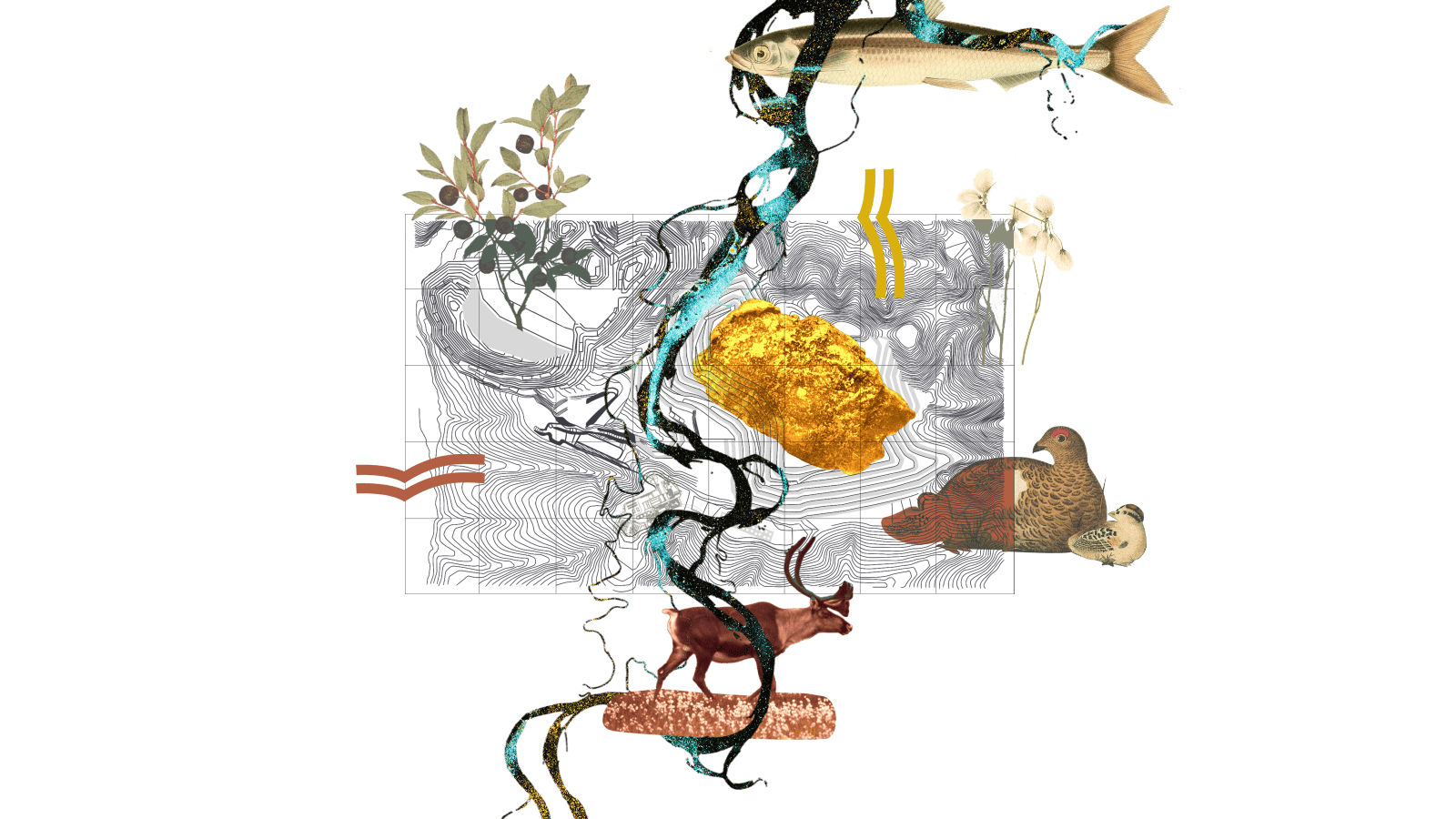Tucked against a bend of the Kuskokwim River in southwest Alaska sits the city of Bethel. Home to about 6,000 people, the community is connected by mostly unpaved roads that are often muddy in the summer and covered by ice and snow throughout the winter. Beyond the city limits, the vast expanse of the tundra stretches toward the horizon. Follow the Kuskokwim in either direction—southwest towards Kuskokwim Bay or northeast towards the center of the state—and you’ll find a network of small villages dotted along the banks of the river.
Sophie Swope, Yup’ik, grew up in Bethel, and usually hung out at the local bilingual Yup’ik-English radio station where her father worked. But her favorite memories are when she left town, spending weekends at fish camps, splashing through wetlands, and picking wild berries in the stunning tundra landscape just minutes outside of Bethel. Her adventures always led to some discovery—a cluster of duck eggs, ptarmigan and their fluffy chicks, a moose hanging out in a meadow, a bald eagle soaring over the 700 mile-long Kuskokwim snaking its way through Southwest Alaska before mixing with the Bering Sea.
In the winter, Swope’s family enjoyed homemade foods they had prepared throughout the year like dried fish, walrus, and muktuk. She remembers her grandmother watching and giggling, delighted that Swope loved traditional meals. “Being able to eat my Yup’ik foods is one of the greatest things,” Swope said. “Eating the food that I am biologically wired to think of and feel as soul food, because it’s been passed down for generations and generations of surviving fully on that.”
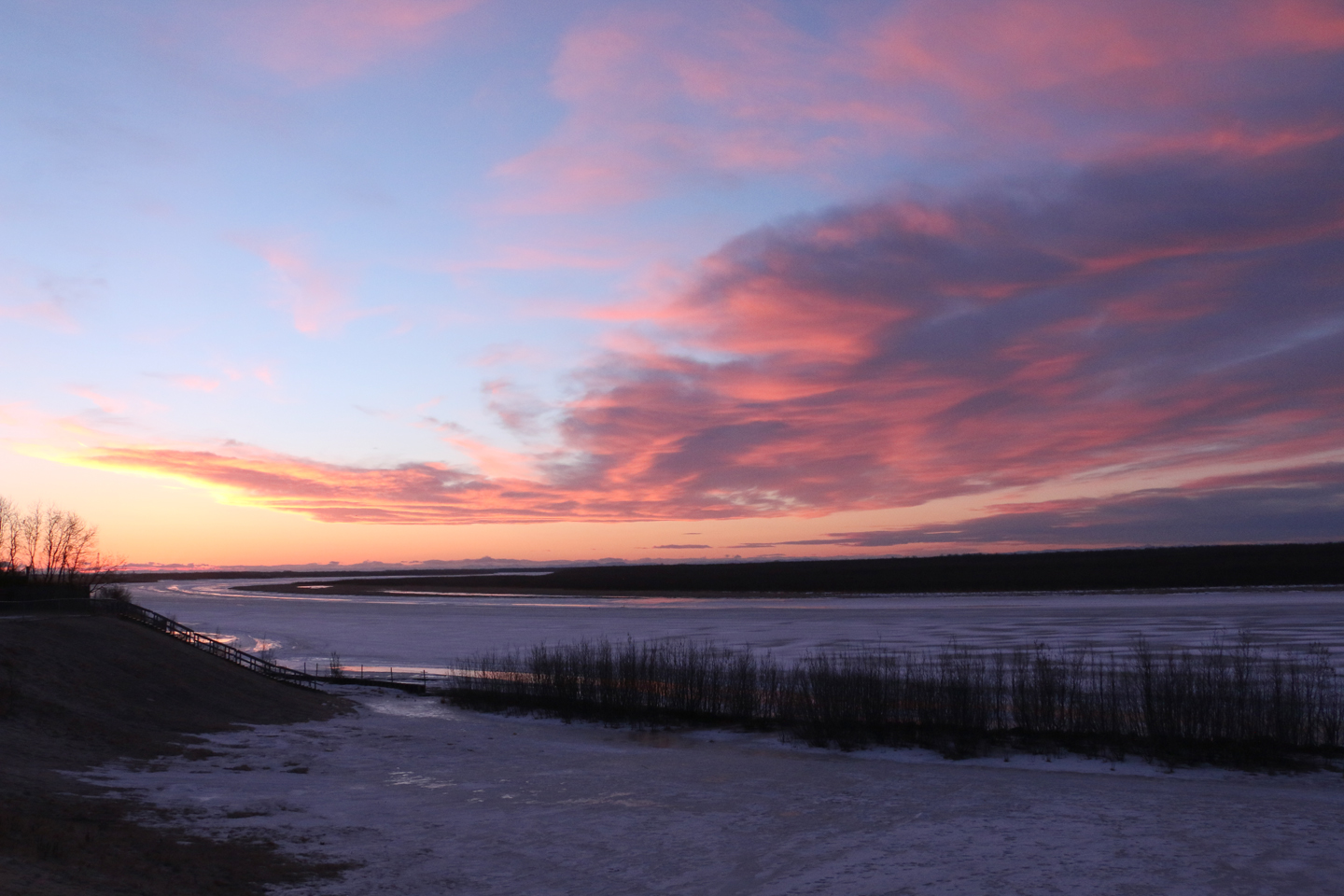
Throughout those generations, the Kuskokwim River has provided food, a community gathering spot, transportation between villages, and a water source to those lucky enough to call the terrain home. Now, a proposed gold mine nearly 200 miles up-river from Bethel threatens the entire region.
Known as the Donlin mine, the project would be built on a tributary of the Kuskokwim River and is owned by Barrick Gold and NovaGold Resources, two Canada-based international mining corporations. On its website, NovaGold calls Donlin “a tier one asset” and “a rare discovery.” It’s estimated that there are about 30 million ounces of gold at the proposed site, which would operate for around 30 years and be the largest open-pit gold mine on the planet.
If completed, the Donlin complex will be around 25 square miles—larger than the island of Manhattan—with a series of facilities to sustain its operations: a two-square mile pit filled with toxic water that will need to be treated after the mine closes; a 2.5 billion-ton mountain of waste rock covering four square miles and towering 1,100 feet high; a 470-foot tall dam to corral a nearly four square mile slurry pond filled with toxic chemicals like arsenic and mercury. There will also be a 300-mile liquid natural gas pipeline starting at Cook Inlet near Anchorage and cutting across rural Alaska to supply Donlin with fuel, an airstrip, a power plant, housing for workers, and two new ports to increase barge traffic on the Kuskokwim to move mining materials.

Swope says Donlin and its associated facilities would severely disrupt the Kuskokwim ecosystem and could completely fracture Indigenous subsistence lifestyles. But what worries her most, is if any of its safety or infrastructure systems fail: If the dam breaks, or the pipeline spills, the results, she says, could be catastrophic. “We’re going to see so much lost in our culture,” Swope said. “We’re going to see so much lost in our populations.”
Swope, now 24, is the director of the Mother Kuskokwim Coalition, an organization dedicated to fighting the Donlin mine along with her tribe, the Orutsararmiut Native Council and other Alaska Native villages and environmental organizations. Since the mine was proposed, Indigenous opponents have brought three separate lawsuits against the mine’s state and federal permits. But for Swope and other Alaska Natives, the fight is even more complicated than a straight environmental battle: the mineral rights for the proposed Donlin site are owned by the Calista Corporation, an Alaska Native Corporation that represents dozens of villages and thousands of Alaska Natives in the region, including the Orutsararmiut Native Council, Swope, and members of her family.
“We’re fighting big money, we’re fighting our Native corporation,” said Beverly Hoffman, an Orutsararmiut tribal elder. “Our tribe has written resolutions, we’ve written letters, and they’re spending millions and millions and millions of dollars against their own people.”

In early June, the annual Calista Corporation shareholders’ meeting was held in Tuluksak, a small village on the Kuskokwim River. Of Calista’s 30,000 shareholders, about two hundred attended the meeting. In the village’s school gym, under a digital scoreboard and 30-year old championship banners, Calista’s board, dressed in a mix of button down shirts and traditional kuspuk tops, held court from tables and a podium at the front of the room. Two board members had flown in from Anchorage, while the others came from their villages. Swope, who scraped together money to charter a six-seat plane for the 20-minute flight from Bethel, and other shareholder attendees were scattered among folding chairs and bleachers.
Calista is one of thirteen Alaska Native Corporations created in 1971 by the Alaska Native Claims Settlement Act (ANSCA). They are for-profit organizations separate from federally recognized tribal governments. When ANSCA created the corporations, it gave them around 44 million acres and $900 million in exchange for the forfeit of all land claims over Alaska. ANSCA was the compromise following years of Indigenous resistance after the U.S. seized their lands and declared Alaska a state. Those corporations were then able to select land from those 44 million acres which they would own and use for whatever purpose they like, while individual tribes retained local governing authority.
Because of this, unlike most Indigenous land in the continental U.S., Alaska Native Corporation-owned land is private. Following ANCSA, Calista selected 6.5 million acres of land in the Yukon-Kuskokwim Delta, including land that is now the proposed Donlin mine site–chosen because of the potential for mineral extraction.
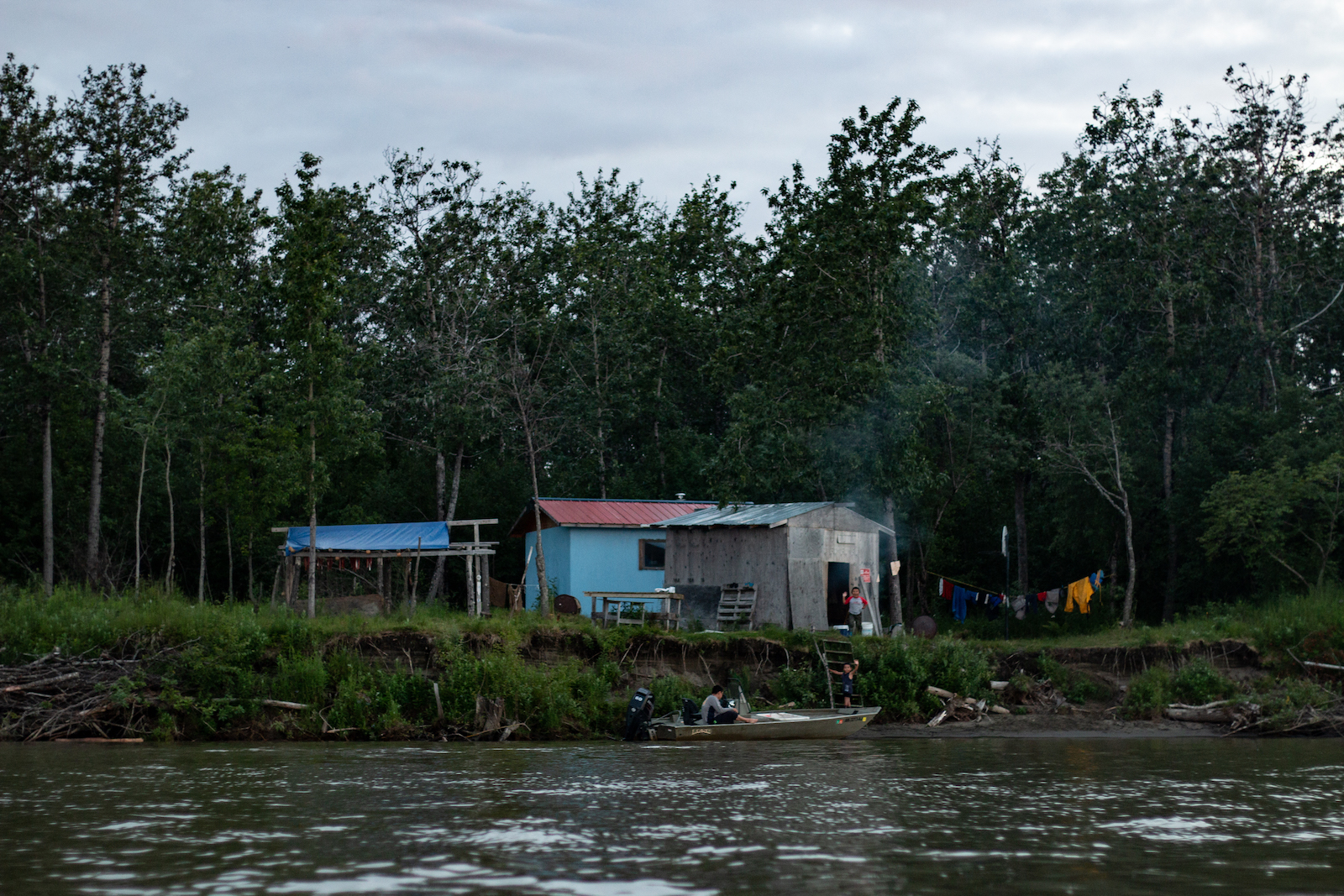
Alaska Natives can be both members of their federally recognized tribes, based on specific ties to individual villages, and shareholders in the Alaska Native Corporation that covers their region. Alaska Natives with at least one quarter Alaska Native blood quantum who were born before 11:59pm on December 18, 1971 received shares in their regional corporations. When Calista was created in the early 70’s, 13,000 Alaska Natives in Calista’s region were given shares in the corporation. These original shares cannot be sold or traded, but they can be gifted or passed down to descendants. In 2017, Calista created two new classes of shares and opened enrollment for descendants of original shareholders, like Sophie Swope. These new shares expire when their holder dies.
Although ANSCA places responsibility for shareholders’ wellbeing on the corporations, the corporations are still for-profit entities, rather than sovereign nations in charge of governing. While they pay dividends to shareholders and fund community projects such as scholarships, cultural development, and youth programs, Swope says Calista’s size and structure makes it difficult to have a say in Calista’s direction. “It’s near impossible for the younger population to actually use their voices and to make any changes,” she said.
Because of this complicated structure and relationship, federally recognized tribes in Alaska generally have less money and land than their counterparts in other states since ANCs control it and are expected to support villages and tribes. Those tribes also have no direct power over the corporations, and in the case of the proposed Donlin mine, dozens of tribes in the region have passed resolutions against the mine, but Calista continues to support the project. “As tribal nations we haven’t come to the point where we believe in our hearts that we have inherent sovereign powers,” Gloria Simeon, a tribal elder and member of the Orutsararmiut Native Council, said. “So while we’ve been playing catch up, corporations have been plowing ahead in the game of corporate greed and corruption.”
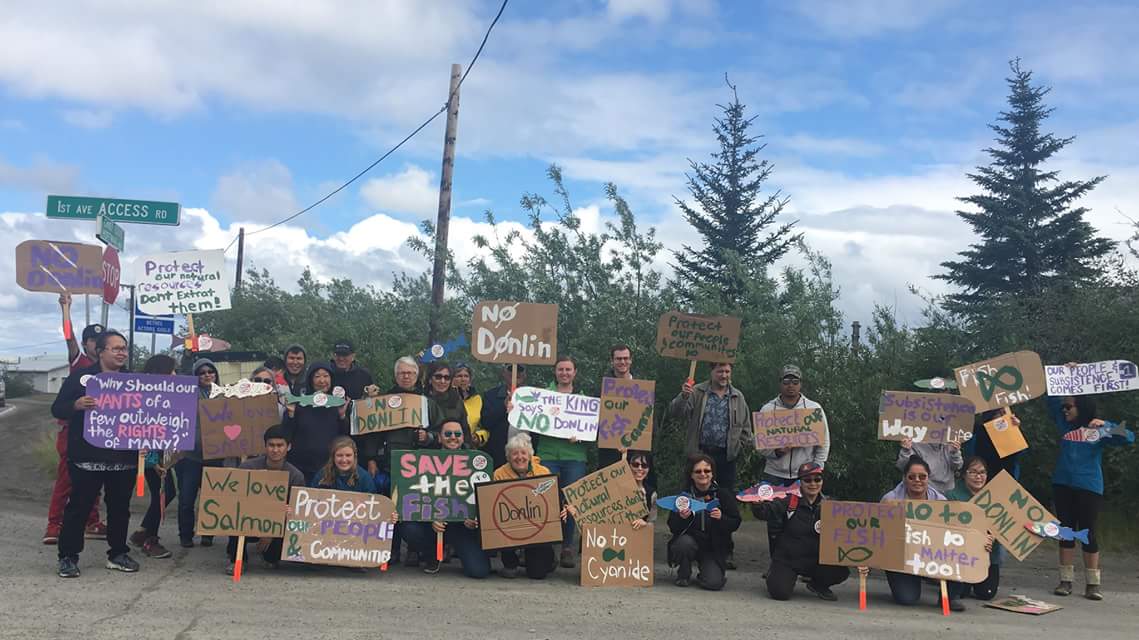
Thom Leonard, Calista Vice President of Corporate Affairs and a Tribal member of Chevak Native Village, who describes Donlin as a “generational opportunity” that could transform the region, denies that Calista only cares about money. Leonard, describing high poverty, unemployment, and suicide rates in the 56 villages Calista represents, believes that the main reason to support the mine is the hope and opportunity it could provide for younger generations. “Being able to provide that type of hope for our youth is just phenomenal,” he said.
“I don’t feel that we’re going to get to a place where there’s going to be 100% of people on board,” Leonard added. He does believe, however, that the more information people have, the more they will support the project. “What we see at the beginning is usually people are a little bit hesitant, on the fence, or opposed,” Leonard said. “But as they learn about the project, as they learn about how it’s our land and our oversight, in addition to all these really strict regulations and laws, it shifts.”
But how widespread support is remains a question. Leonard says that Calista has made every effort to address shareholder concerns and that the corporation has conducted nearly 200 village meetings to discuss the mine, plus additional meetings in response to specific questions. Based on these meetings, Leonard says that their data indicates the majority of shareholders support the mine. As well, at the June meeting in Tuluksak, Calista board members claimed that a community poll had gone out to shareholders. In response, Beverly Hoffman, a tribal elder and former dog musher who attended with Swope, asked members in attendance to raise their hand if they had even seen the poll. No one, Swope recalls, raised their hand.
“It’s kind of beyond me that these are the people representing us and the titles to our land,” Swope said.
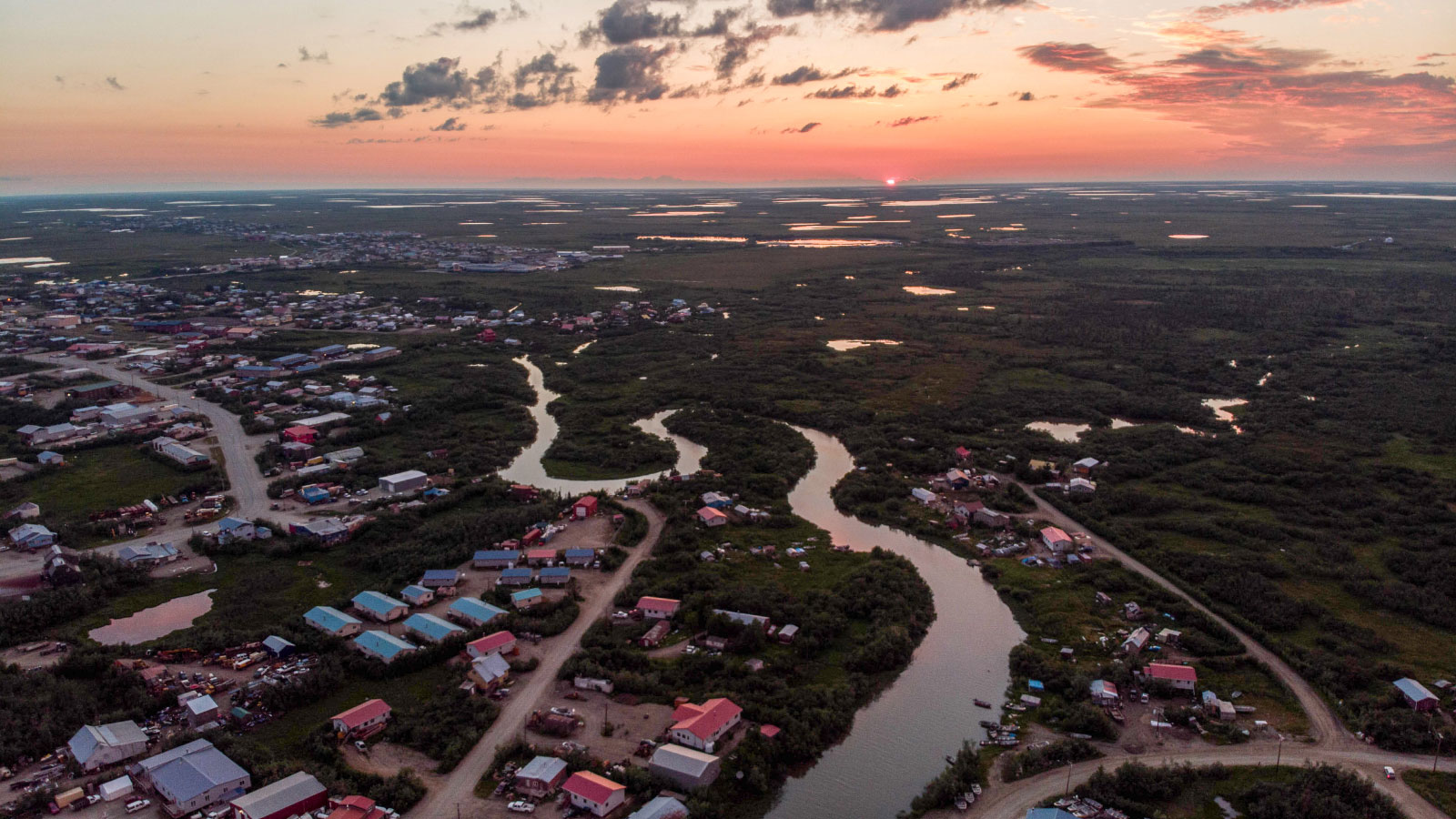
If completed, Donlin would be one of the largest sources of greenhouse emissions for any mine in the state. The proposed pipeline to carry fuel to the site would cross nearly 200 streams identified as fish habitat. It would also require the fill of hundreds of acres of wetlands. Salmon spawning is very sensitive to changes in water temperature and any harm to salmon populations in the Kuskokwim would represent a blow to a vital species and Indigenous subsistence. In 2018, the U.S. Army Corps of Engineers released its Final Environmental Impact Statement for the mine, which, among other permits, is now the subject of litigation brought by Earthjustice, a non-profit environmental law organization, on behalf of the Orutsararmiut Native Council, three additional tribes, and an environmental nonprofit. The lawsuits challenge the pipeline right of way given by the state, twelve water appropriation permits, and the federal water quality certification permit. All focus on the environmental impact of the mine, and, according to the complaints, that the permitting process did not accurately assess the mine’s potential risks.
Donlin’s own water models predict that the reduction in groundwater due to the mine will raise water temperatures to within less than 1°F of water quality standards: 55.1°F where the standard is 55.4°F. But according to Earthjustice, those numbers do not account for climate change and increasing temperatures over the next thirty years, which could easily push water temperatures over the legal threshold for spawning. “Given the fact that the model predicts compliance by the narrowest of margins, there is far too much uncertainty to support a finding that the mine will comply with temperature standards,” Earthjustice said in its June request for a hearing over a state water quality certification. “When climate change is added to the mix, there is no assurance at all.”
“Our corporation, our state government, and our federal government has failed us through the permitting process by not listening to our voices and the pleas of our people to survive,” said Gloria Simeon, of the Orutsararmiut Native Council. “If our land, our river, our air is destroyed, we have nowhere else to go.”

Despite the environmental concerns, Calista maintains that the environmental review has been comprehensive. Calista says that its first concern for any project is the environment and the subsistence lifestyles that rely on it. By working directly with Donlin, Calista says, it has helped to ensure that Indigenous interests are protected. “The environmental review and monitoring of this project is massive and it will continue with opportunities for shareholders to provide input,” said Tisha Kuhns, Calista’s Vice President of Land and Natural Resources and Tribal member of the Akiachak Native Community. Kuhns adds that Donlin has reduced mine-related barge traffic on the river by 50% in response to shareholder concerns.
“The loudest voices in the room doesn’t necessarily mean that that’s how the majority of people feel,” said Leonard.
Starting this past winter, Donlin began preliminary drilling and planning, with a budget of $60 million for 2022 and no indication that it intends to stop. Barrick and NovaGold, the corporations that own Donlin, did not respond to multiple requests for comment on this story, but in a statement, Donlin Gold said: “For over 25 years, Donlin Gold has supported the self determination of Alaska Natives in the Yukon-Kuskokwim region, upheld environmental and subsistence traditions, and provided economic opportunities for shareholders.”
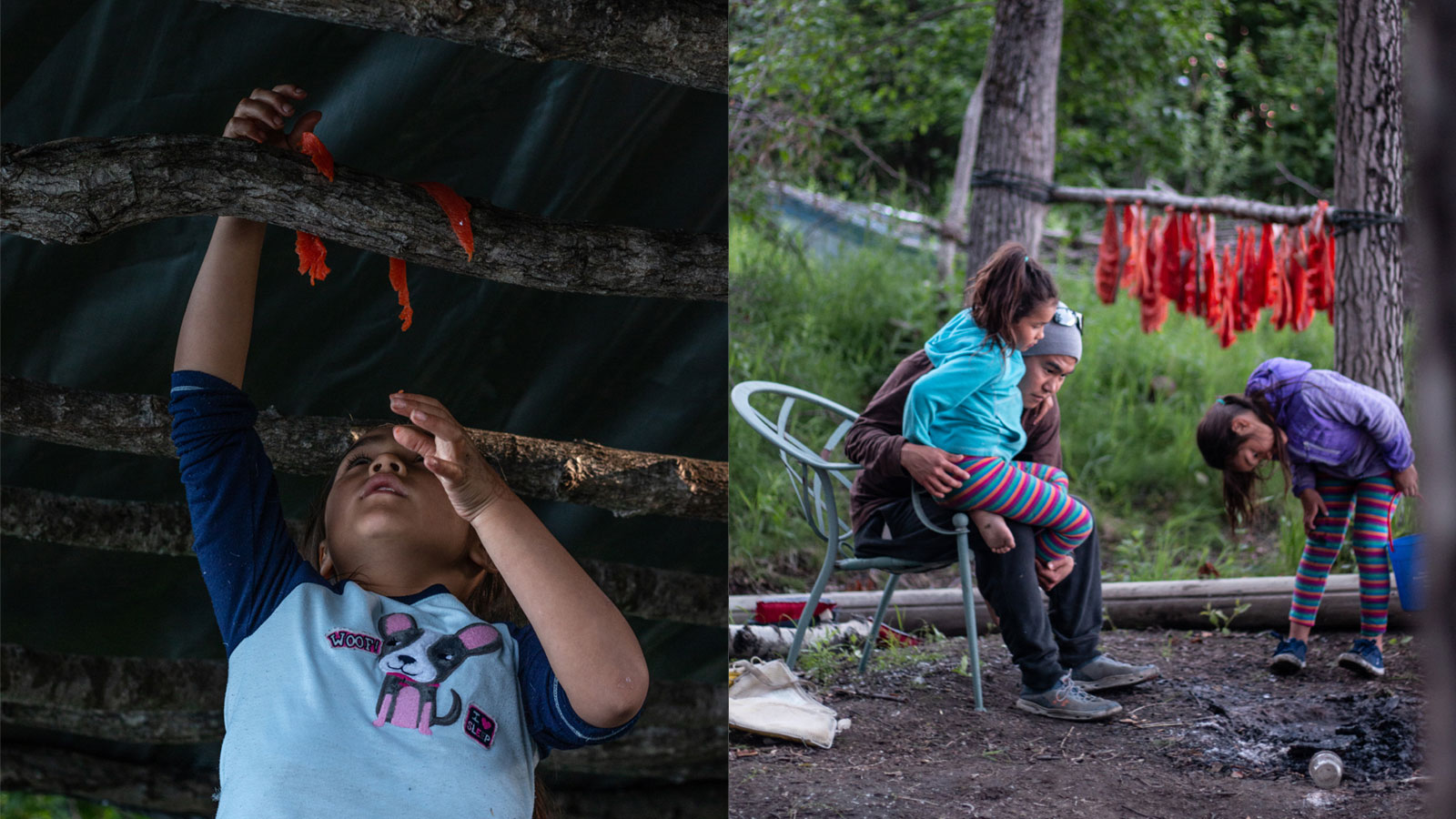
In addition to Calista, the mine is also supported by The Kuskokwim Corporation, an Alaska Native village corporation that owns the surface rights to the Donlin site. In a statement, the Corporation said: “The Kuskokwim Corporation’s (TKC’s) priorities are, and always have been, supporting our Shareholders and protecting our land. We support development of our resources when it can be done in a responsible way, allowing traditional use and development to coexist.”
Sophie Swope regularly makes sure to remind herself what she is protecting. Whenever they can, Swope and a few lifelong friends head to their fish camp up the Kuskokwim river. From there, they kayak and paddleboard around before docking and hanging out on the bluff overlooking the Kuskokwim while snacking on wild rosehip berries. “It’s a small thing to do, but so grounding,” she said.
Swope has always dreamed of sharing Yup’ik food and culture with her future children, but she says the prospect of the mine is now putting that hope in doubt.
“If this mine is pursued and it affects everything that I was raised on and know and love so much, I’m not sure I’m going to actually want to have a family,” she said.
This story has also been corrected to reflect attendance at Calista’s shareholder meeting, as well as board travel itineraries. It has also been updated to clarify tribal affiliation for Calista board members and employees.

